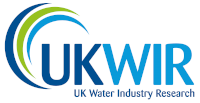Helping secure water resources for the future
23/08/2022
Earlier this year, the five regional water resources groups published their first plans taking a regional, and national, view of water resources needs. Later this year, they’ll publish the next iteration of these plans – their Best Value regional plans.
Alongside this, each water company in England and Wales will publish their draft Water Resources Management Plans. These will be aligned with the overarching regional plans, and detail how each company will secure the water their customers and the environment needs for at least the next 25 years.
These essential plans are all based on the Water Resources Planning Guidelines, developed by Defra, the Environment Agency and Natural Resources Wales, and UKWIR’s work stretching back nearly three decades has been instrumental in their development.
The most recent guidelines reference almost 20 different tools, research reports, methodologies or guidelines UKWIR has developed with our partners in water companies, academia and the supply chain.
These range from our 1995 report “Outage allowances for water resources planning” to more recent work on, forecasting household consumption and occupancy, environmental assessments for water resources planning and risk-based planning.
One of the most relevant for these plans is our 2020 report “Deriving a best value water resources management plan (20/WR/02/14)”.
This work, undertaken in collaboration with our members, technical, regulatory and legal experts, developed a framework for deriving a best value water resources management plan – including how to define best value.
The framework was tested at a mock public inquiry with legal experts, to identify potential areas that need strengthening in future.
The project identified five key principles of a best value water resources plan. It emphasised each plan must:
- consider a range of factors to offer a benefit greater than the statutory minimum requirements to meet supply duties.
- robustly and transparently illustrate how and where those factors have been considered.
- clearly set out its objectives and explain how they will be met.
- demonstrate meaningful engagement has taken place with regulators, stakeholders and customers at key stages and show how their views and evidence have been considered.
- be deliverable by water companies – including ensuring regional plans are compatible with individual companies’ statutory duties and decision making.
The project also made a series of recommendations, including a high priority recommendation for the framework to be adopted by promoters of best value water resources plans.
Paul Merchant, UKWIR’s Programme Lead for the Halving Abstraction Big Question said, “As water companies and regional water resources groups publish their Best Value plans for water resources later this year, this work will be invaluable to help them ensure their plans are robust, transparent and meet their customers’, stakeholders’ and regulators’ needs”.
UKWIR’s Big Question “How do we halve freshwater abstraction in a sustainable away by 2050?” is providing crucial research as water companies, the supply chain and regulators move from preparation to delivery to meet the challenges the sector faces.
For more information about our work to support companies secure water resources, visit ukwir.org
